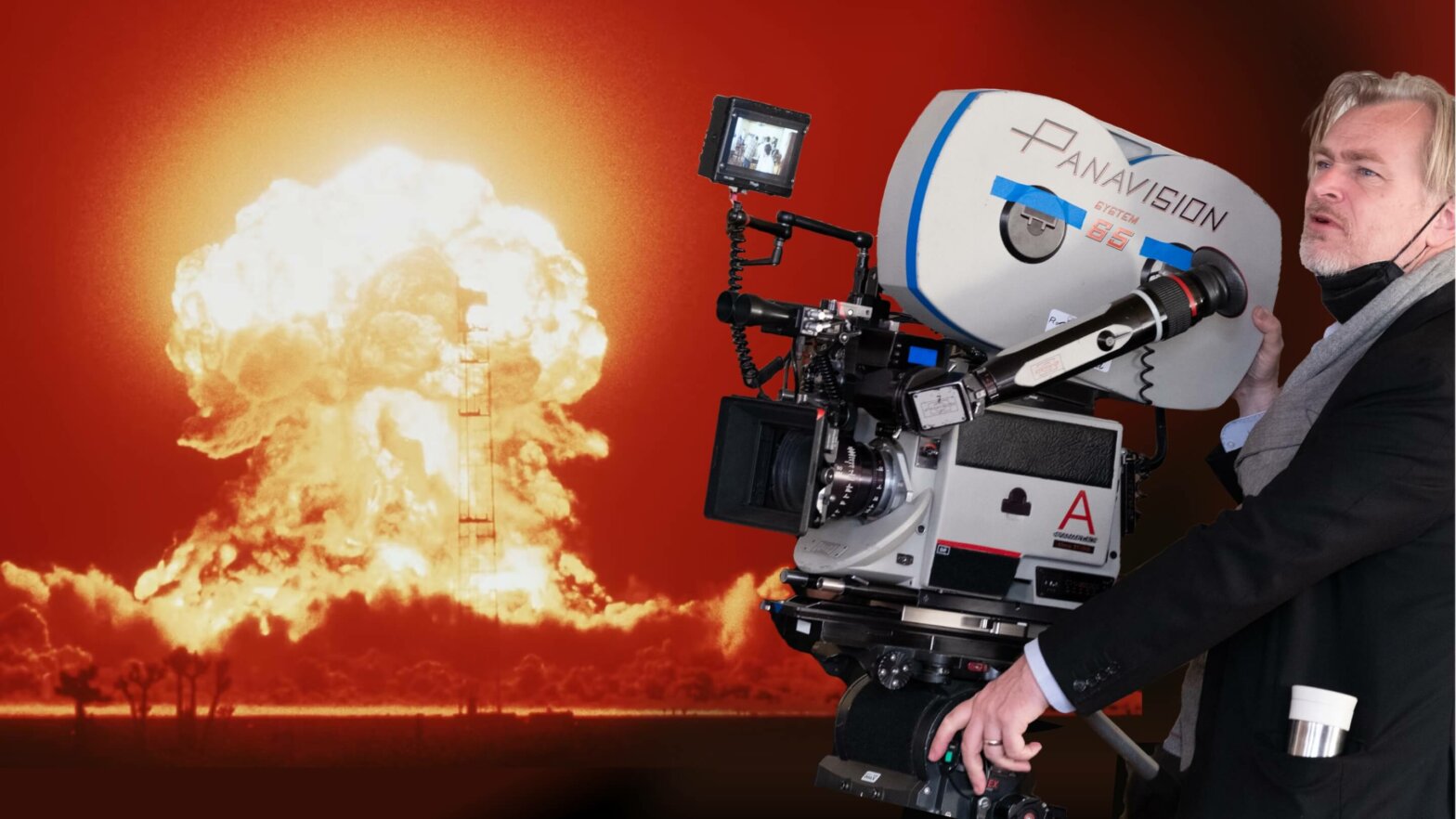I
t’s no secret that Christopher Nolan is a fan of practical effects. From running a plane into an airport to building an entire rotating hallway, the man likes to do it for real. Oppenheimer is no different. Though Nolan didn’t exactly detonate an atomic bomb, the auteur utilized in-camera effects in creative and unexpected ways. Let’s break down some of the best Oppenheimer practical effects.
Oppenheimer Practical Effects
Filming the Oppenheimer explosion
In comparison to action-packed affairs like The Dark Knight or Inception, Oppenheimer is much less demanding in regards to visual effects.
Its story is primarily told through conversations — meetings, interviews, and hearings abound.
And yet there is one, big effect that needed to pack a punch: the Trinity Test. The first half of Oppenheimer leads up to the moment where the first atomic bomb is detonated, and as such, it had to look just right.
For Christopher Nolan, this meant doing it as a practical effect.
OPPENHEIMER PRACTICAL EFFECTS
What is a practical effect?
A practical effect is a special effect that is created physically, rather than with computer generated imagery (CGI). It can refer to props, camera tricks, makeup, animatronics, and more.
This responsibility lay with Andrew Jackson, the VFX supervisor for Tenet and Dunkirk, who teamed up with Nolan again for Oppenheimer. Jackson worked with special effects supervisor Scott Fisher to run extensive tests during pre-production.
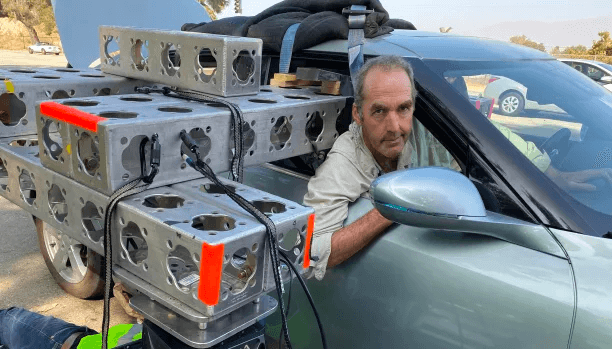
Andrew Jackson in action • Practical effects Oppenheimer
The two, along with a large effects team, decided on an explosion that comprised multiple smaller combustions. The largest of these explosions was created from primarily gasoline which, when ignited, burst into a mushroom cloud much like a nuclear blast, only smaller. The team then added some aluminum and magnesium powder, which increased the brightness of the blast.
Once they were happy with the faux-nuke explosion, the team then placed the bomb in front of the tower, which in the film suspended the device high above ground. By placing the practical bomb nearer to the camera than the tower, the explosion looked larger than it actually was.
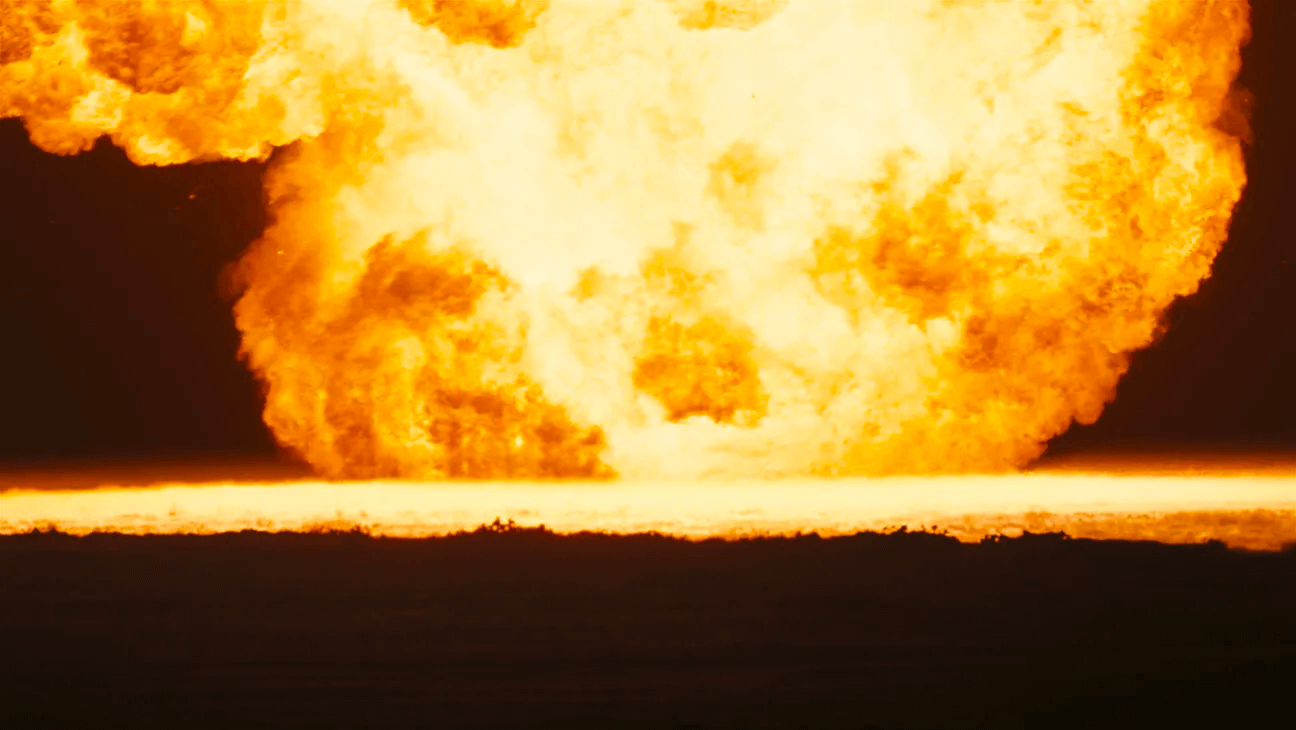
The blast • How did Oppenheimer film the bomb
Some CGI wizardry was required to further amplify the visual impact of the blast. Other, smaller explosions were recorded separately, shot at different distances, and added via compositing. In all, one hundred VFX shots were used along with 400 practical elements.
Cinematographer Hoyte van Hoytema and his camera team shot the blasts differently depending on their purpose. The core explosion was filmed on 65mm IMAX at 48 fps. The smaller combustions used in compositing were shot on 35mm cameras at 50 fps.
Take a look at the process with this behind the scenes video:
Did Christopher Nolan detonate a nuclear bomb? Not actually
The results speak for themselves. Oppenheimer’s nuclear explosion is like no other captured on film. It delivers enough power to do Oppenhiemer’s famous quote justice: “Now I am become Death, destroyer of worlds.”
OPPENHEIMER PRACTICAL EFFECTS
Subatomic particles on celluloid
Oppenheimer doesn’t just capture massive explosions. It also shows us the microscopic, the dynamic and chaotic subatomic worlds that make up our reality. Throughout the film we see whirring electrons and crackling particles in stunning clarity.
Of course, Nolan and his crew couldn’t actually capture subatomic objects. Instead, they experimented for months, trying to create an idea more than a pre-existing image.

“We were trying to visualize what might be going on in [Oppenheimer’s] head at a time when there weren’t really good images of all these things, so an accurate representation would be meaningless. And then at the other end of the spectrum is some sort of infographic representation that the audience can understand.”
— Andrew Jackson, VFX Supervisor
For Jackson and his team, nothing was off the table. Spinning beads, ball bearings, aluminum flakes, ping pong balls — Jackson filmed it all on his iPhone and sent the footage to Nolan for his thoughts.
The objects they landed on were placed in cloud tanks, which are huge tanks with layers of water that look like clouds. For most of Hollywood history, cloud tanks have been used to simulate, well, clouds. But Jackson used the tanks to create a murky microscopic world in which he could film his particles.
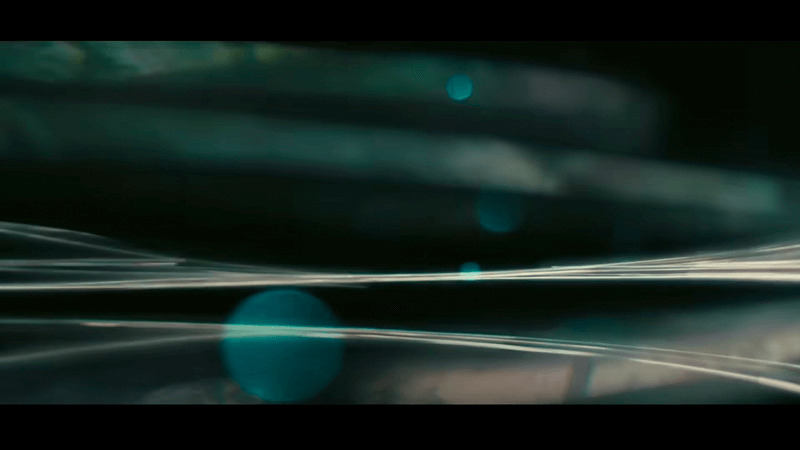
Oppenheimer special effects
Even though they weren’t filming actual electrons, they were still working with tiny objects, which required a custom IMAX lens that could shoot microscopically but maintain a wide-angle scope. Such a lens was devised by Panavision lens wiz Dan Sasaki.
Like with the explosion, frame rate played a key role in selling the effect. Jackson shot the electrons at a slow frame rate in order to create a long exposure that could create evocative motion blur.OPPENHEIMER PRACTICAL EFFECTS
On-set effects
Much of the VFX we’ve touched on so far were recorded separately from the main unit. But there were several effects that were shot on set, with principal actors involved.
Take, for example, the scene early in the movie where a young Oppenheimer is gazing up from his bed at what looks like spinning electrons. This was accomplished in-camera.
Nolan’s VFX team placed a spinning device with small lights attached to it in front of the camera, close enough that it was out of focus and thus the rods holding the lights were rendered all but invisible. The end result looks incredible:
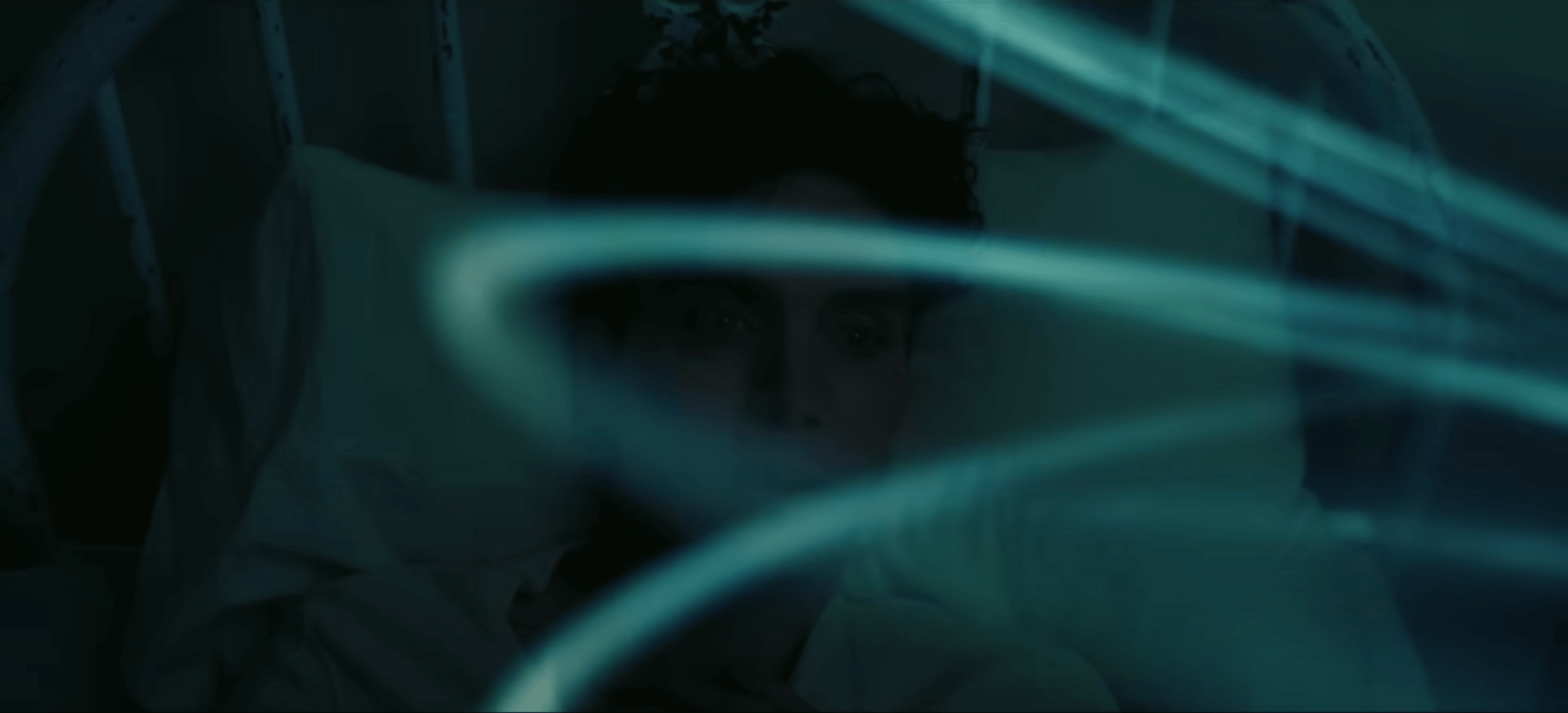
Oppenheimer practical effects
Another effect which recurs throughout the film is the unsettling jittering background. At certain points, Oppenheimer’s emotional distress is externalized with this visual, where it seems like his surroundings are glitching.
Surprisingly, this too was done practically and in camera. Andrew Jackson would take a picture of the set and then project it exactly in line with where the camera was. Then, as the scene was recorded, he would shake the projector, making it seem as though the background is going in and out of double vision.
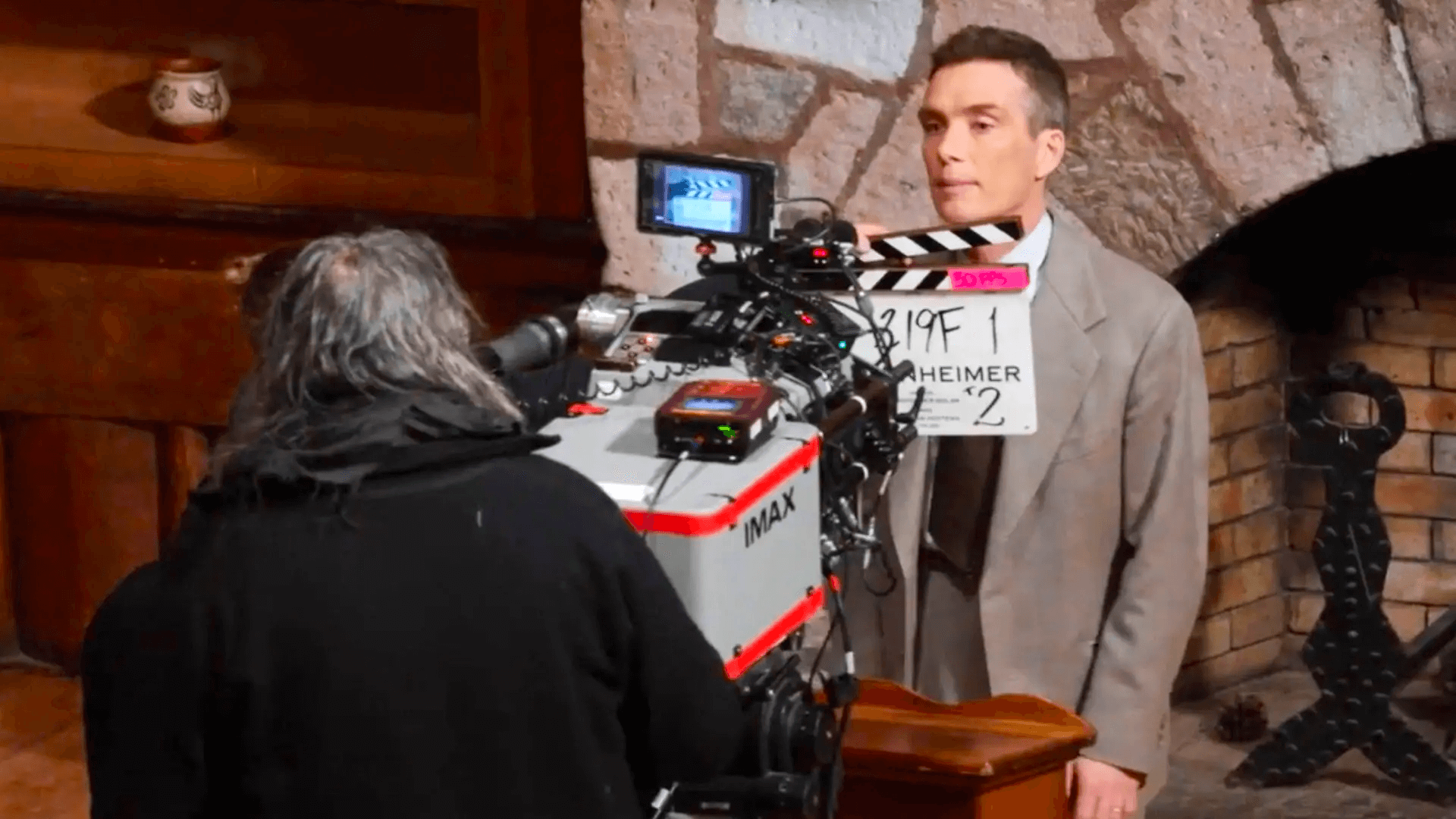
A projector is aligned with the backdrop behind the actor • Oppenheimer visual effects
Having this effect on set allowed Jackson to adjust its intensity in accordance with Cillian Murphy’s performance. The more unstable he was, the more unstable the background would be.
Christopher Nolan’s practical effect philosophy, paired with his team’s tireless dedication to getting it right, creates unforgettable imagery throughout Oppenheimer. It’s a strong case for the argument that if you can do it for real safely, do it for real. There’s no substitute.Up Next
Oppenheimer Screenplay Download
Visuals can only take you so far, even with the likes of Oppenheimer practical effects. For Nolan to make a truly great movie, he had to start with a truly great script. We have the full screenplay for your reading pleasure, along with a breakdown of what makes it unique and what makes it work.
Up Next: Oppenheimer Script →
Showcase your vision with elegant shot lists and storyboards.
Create robust and customizable shot lists. Upload images to make storyboards and slideshows.
